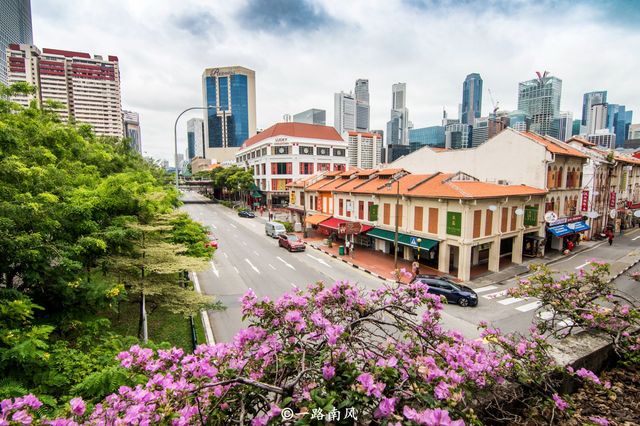A Taste of Old Singapore
the daydream parade
Pretty Cafe with nice vibe
Dap.pwq
Chinatown
KrisAdventure_19
Chinatown Singapore Free Attractions
BRYNN HOPKINS
Chinatown, Singapore
collins_the_volans
You can't miss the grandpa ice cream when you come to Singapore
Dr. Caden Wilkinson DVM
Popular Trip Moments
Omakase in Singapore! 🇸🇬 @ AMARA hotel | Marina Bay Garden 🌸🇸🇬 | Fun At Sonic Bowl | Best Hotel Ever! | Comfort and Style at One Farrer Hotel | LA SAVOIR menu served on Hermès plates | Grand Sentosa villa staycation | 🇸🇬French Cuisine Restaurant🥖Bugis Shophouse | A Pink Theme Cafe | Tamjai SamGor Restaurant | 🇸🇬 Wonderful stay @ ONE°15 Marina Sentosa Cove | Forget everything you thought you knew about plant-based dining! | Whitegrass Restaurant | The White Label | BAKALAKI Greek Taverna | Spanish evening delights | Tropical getaway at Sentosa | The House Bar | Bar Intermezzo | 🇸🇬 Fort Siloso @ Sentosa Island | Tippling Club | MUJI Restaurant @ Plaza Singapura 🇸🇬 | Collin’s Western Cuisines Mandai Wildlife West | River Wonders Celebrating 10th Anniversary | Working Title Riverside café in Singapore | Hidden New Deli Bakery Cafe | Home Cafe | Uplift One Another Muji Lifestyle Store | Giant Pandas Kai Kai & Jia Jia | Level Up - Arcade & Live Music Bar
Popular Travel Types
Trending Travelogues
All you need to know before you go: Singapore entry requirements | Ultimate guides: How to travel from Singapore to Malaysia? | 5 best places to travel during your time in Sentosa Island, Singapore | Exploring the beauty of Pulau Ubin like a local | Hari Raya Aidilfitri 2023: Traditions and customs of the festival | Visiting Singapore zoo: A real treat for wildlife lovers | 🌟 Trip Moments Posting Guidelines 🌟 | 12 Hotels Queen Elizabeth II Had Stayed On Her Global Travels
Popular Destinations
Chester Travel | Nanjing Travel | Northampton Travel | Hiroshima Travel | Belfast Travel | Sheffield Travel | Pakistan Travel | Chennai Travel | Krabi Travel | Nevsehir Travel | Los Angeles Travel | Dublin Travel | Nottingham Travel | Swansea Travel | Prague Travel | Paralimni Travel | Yangcheng Lake Travel | Hobart Travel | Coffs Harbour Travel | Wellingborough Travel | Dennis Port Travel | Pori Travel | Giverny Travel | Klamath County Travel | Kronshtadt Travel | Mae Fa Luang Travel | Volterra Travel | San Miguel County Travel | xiandu Travel | Indian River County Travel
Recommended Attractions at Popular Destinations
Bangkok attraction near me | Tokyo attraction near me | Manila attraction near me | Hong Kong attraction near me | Taipei attraction near me | Seoul attraction near me | Los Angeles attraction near me | New York attraction near me | Shanghai attraction near me | Kuala Lumpur attraction near me | Shenzhen attraction near me | Osaka attraction near me | Singapore attraction near me | Guangzhou attraction near me | London attraction near me | San Francisco attraction near me | Beijing attraction near me | Macau attraction near me | Bali attraction near me | Paris attraction near me | Ho Chi Minh City attraction near me | Orlando attraction near me | Jakarta attraction near me | Phuket attraction near me | Chicago attraction near me | Toronto attraction near me | Istanbul attraction near me | Cebu attraction near me | Dallas attraction near me | Seattle attraction near me
Popular Attractions
Warwick Castle | Boracay | Universal Studios Hollywood | Vana Nava Water Jungle | The Manila Cathedral | Colosseum | Ba Na Hills | Mount Huangshan | Ghibli Museum | Lingyin Temple | 2024 IU H.E.R. WORLD TOUR CONCERT IN HONG KONG | Louvre Museum | Bangla Boxing Stadium | Sun Moon Lake | Henan Museum | Zhuhai Chimelong Ocean Kingdom | Singapore Zoo | AAMTALLA BHERAWA Masjid | Darius Wells Library and Resource Centre | Theodore Wirth Chalet | Kuala Pilah Stadium | Terenul de fotbal Zetea | Eagle Vale Central | Geeta Ashram | Jivdani mandir | Giardini di via Tortona | Masjid Al Hasanah | Hot Air Balloon Cappadocia | The Blue Mosque | Arc de Triomphe de l’Etoile
Popular Restaurants in Singapore
Spring Court | National Kitchen by Violet Oon Singapore | Summer Pavilion | Chatterbox | Long Beach UDMC | Alma by Juan Amador | Colony | Odette | Birds of a Feather | JAAN By Kirk Westaway | Les Amis | CUT by Wolfgang Puck | The Blue Ginger (Tanjong Pagar) | Iggy's | Waku Ghin by Tetsuya Wakuda | Fat Prince | Zén | Burnt Ends | Palm Beach Seafood | SPAGO DINING ROOM BY WOLFGANG PUCK | Red House Seafood Grand Copthorne | NG AH SIO Bak Kut Teh (Rangoon Road) | Shoukouwa | LeVeL33 | CÉ LA VI Singapore | Keng Eng Kee Seafood @ Alexandra Village | ATLAS | PUTIEN Kitchener Road | Symmetry | Imperial Treasure Fine Teochew Cuisine
Payment Methods
Our Partners
Copyright © 2024 Trip.com Travel Singapore Pte. Ltd. All rights reserved
Site Operator: Trip.com Travel Singapore Pte. Ltd.
Site Operator: Trip.com Travel Singapore Pte. Ltd.






















